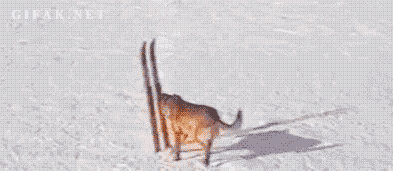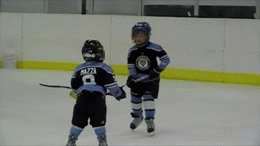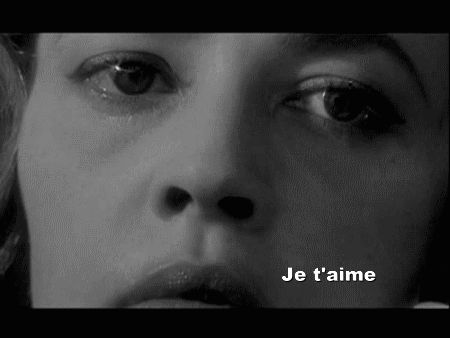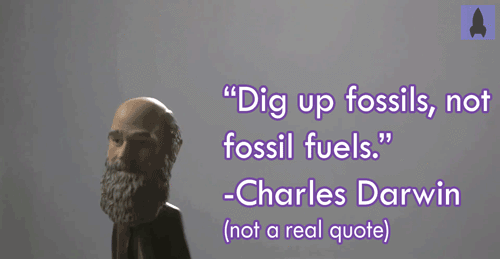Matador Network's Blog, page 2309
February 26, 2014
The easiest $25 you’ll ever make
When you can make honest money while traveling with very little effort — that’s a win-win. The team at Hotel Confidential knows this and is giving smartphone-savvy travelers the chance to make $25 for videos created from their hotel. In doing so, Hotel Confidential is setting itself up to be a massive catalog of user-generated hotel review videos by incentivizing hotel goers.
No special gear or editing skills are needed for this easy cash flow, just a steady hand and a hotel room. I find myself in hotels often enough to give this crazy scheme a try (who doesn’t want 25 extra bones?) — this is what’s up:
You have to register your hotel from the HC website.
You must vet your hotel via the HC website before you can upload your vids and claim your $$.
You have to use your smartphone.
The deal is that you shoot a 60-90 second video showing aspects of the hotel with your smartphone in landscape mode. One shot/take per video.
You have to shoot 4 videos.
For your $25, you must create 4 videos featuring aspects of the hotel property — the room, the lobby, the exterior, and one additional feature or amenity.
You have to narrate your vid.
You don’t have to go full David Attenborough, but you do have to narrate your vid with info on the hotel and some description of what you’re looking at.
You have to upload your videos to the HC site and write a quick description.
This is pretty easy — email yourself the smartphone vid and upload from your computer.
Shooting the 4 videos is simple. 90 seconds is nothing — I created my 4 videos in less than 15 minutes, wandering around the hotel holding my iPhone aloft. My conclusion: If I’m gonna stay in a hotel, I may as well cover the insane cost of the in-room wifi or an ill-advised visit to the minibar with a few quick videos.
Visit the HC site to register the hotel you’re staying at and upload your videos. [image error]
The post The easiest $25 you’ll ever make appeared first on Matador Network.

The mystifying head nod
While virtually all of my first visit to India was profoundly disorienting, one of the strangest differences I noticed was the Indian head shake. If you’ve been to India, you’ve seen it (and if you’re an Indian, you’ve almost certainly done it): it’s a sort of swivel/shake/bobble that’s not particularly easy for the untrained neck to replicate. No matter how many people I asked, though, I never got a clear answer to what it meant — Is it a yes? A no? A maybe? An, “I didn’t understand a word of what you just said”?
All of them were plausible. It turns out, there are different categories of the head shakes, and Meenfriedchikencurry has the explanation for all of them. Now I can go back to India and be just slightly less confused. [image error]
The post The mystifying ‘Indian head nod,’ explained [vid] appeared first on Matador Network.

Celebrity exclusive: Ashley Bell

Photos courtesy of Ashley Bell
My knowledge of elephant rehabilitation is, admittedly, quite limited. While I care very much about endangered species and preserving their environments, my involvement hasn’t gone beyond donating to the World Wildlife Federation, or posting a “Save the Whales!” link on Facebook.
So in talking to actress and animal supporter Ashley Bell — who is currently starring alongside Rebecca Hall in Broadway’s Machinal, and can be seen in Love & Air Sex, available now on VOD and in select theaters — I wasn’t sure what to expect regarding her latest endeavor, a documentary film entitled Love and Bananas. Lots of celebrities have “causes” that they are the “face” for, but don’t go beyond that. Would Ashley describe this charity with rehearsed lines, just like a scene from a script?
To my relief, Love and Bananas is definitely a cause worth fighting for. It’s completely a labor of love, brought about by Ashley’s passion and desire to make the world for elephants, and other creatures, a better place to live.
The title of her documentary, which focuses on the rescue and rehabilitation of two Asian elephants in Cambodia, was inspired by the work of Lek Chailert, who runs an elephant sanctuary in Thailand.
“While working together, Lek would often have bananas piled in front of her,” Ashley explained. “I watched her jamming medicine into them, to help the elephants. In working with these animals, you have to be careful at first, because their trust of humans has been broken through abuse. But by day three, they warm up to you, and approach you.
“It’s so true what they say, that ‘an elephant never forgets.’ It was then that I knew the world could help animals through affection, and patience — through a little ‘love and bananas.’”
The moment Ashley began to speak, I could hear the genuine passion she had for animals in her voice. An animal rights supporter and vegetarian since she was young, Ashley described how, through research and the education her parents provided, she developed her love for all things living.
“When my classmates went to the zoo, or the circus on field trips,” she explained, “I was the one outside of the school, protesting the trip!”
She’s since become an Ambassador for Cruelty-Free International. Her involvement with the elephants of Cambodia didn’t arise until fairly recently, however. Ten years ago, Ashley’s friend David Casselman founded the Cambodia Wildlife Sanctuary to protect elephants and other endangered animals of the region and preserve their natural habitat.
He’d been looking for elephants to rescue, and the opportunity came in late 2012, when Casselmen sent out a call to action: “We found first 2 elephants to rescue. Anybody who wants in, come!”
“I never go on vacation,” Ashley described. She has starred in numerous feature films, including a nominated performance in The Exorcism of Emily Rose. “But after reading David’s email, I said, ‘I’ve got to go!’ I booked tickets for Cambodia that evening, and left as soon as I could.”
Lek kept saying, ‘Run!’ I start to run, and turned around to see the elephants charging into jungle.
The initial experience for Ashley was filled with mixed emotions. She felt inspired and overjoyed at watching the rescued elephants take their first steps of freedom, playing an integral part in their recovery and rehabilitation, and experiencing Cambodian culture firsthand. But she wasn’t prepared for the harsh realities that came with such a rewarding opportunity.
“You think you know so much about a situation,” she explained. “But you really have no idea. While in Cambodia, I learned that 75% of rainforest is gone from slash-and-burn logging. I learned that there are no more wild Asian elephants, and that they are all living in captivity.
“To make the elephants captive, you have to break them — they are beaten straight with a bull hook. The love and attachment of their mothers is replaced with abuse.”
Ashley’s ‘Wow!’ moment came when she recognized these crippling juxtapositions. “I was taken by the majestic, raw, exuberant feel of untouched jungle, in stark contrast to the smoldering trees.”
What impressed me the most about Ashley’s story was how she was able to connect with equally passionate and inspiring individuals during her time in Cambodia. Lek Chailert is one of the biggest advocates for elephant rehabilitation in the world, and plays an integral role in Love and Bananas. Chailert is one of Ashley’s personal heroes, and working alongside her proved to be life changing.
“Every act she does is so selfless,” Ashley describes. “Lek spent the night rescuing these elephants, traveled across a war zone, took them on a truck, then on a ferry, medicating them the entire time with medicine stuffed into bananas to feed them.
“One day, she asked me, ‘Do you want to go on a walk with the elephants?’ Of course I did! Lek then pointed into jungle, and said, ‘Run!’ I was confused, but Lek kept saying, ‘Run!’ I start to run, and turned around to see the elephants charging into jungle. These elephants were carving a path with Lek for first time.”
Her story sent shivers down my spine, envisioning the joy these elephants must have felt in tearing through the jungle without fear. I knew this experience must have come with obstacles, however. What types of risks were involved in such an endeavor? What day-to-day conditions are we taking about?
She replied with nervous laughter. “We learned that squatters were coming into the sanctuary land,” she begins. “They were cutting down the trees, and poaching animals. David wanted to see what was being taken down, so we boarded a helicopter and flew over the land. It was such a shock, to see the deforestation for first time — the land was completely charred.
“Even if it’s only one elephant at first, if Love and Bananas can educate people, and bring more awareness to this issue, I’ll have done my part.”
“We looked down and saw loggers cutting down trees using oxen. Then David starts yelling, ‘Cut hard! Cut hard!’ The helicopter circled around them, and the loggers scattered. We managed to chase them away. We wanted to send them a message, let them know what they were doing wasn’t right, that ‘somebody’s watching.’”
That wasn’t the end of it, however. Ashley went on to say that her crew was called to land on a military base, where Cambodian military men wearing flip-flops, camouflage, and AK-47s, traveling on motorcycles, surrounded them.
“We had to call in certain local people to get us out,” she said. It was a tense moment she experienced during her first days there. She also explained that the crew must use undercover camera work, and aerial footage, in areas where they are denied access.
Ashley’s energy is admirable — she considers her acting career, and her work on Love and Bananas, to be two full-time jobs.
“That’s what’s so exciting about taking on a project like this,” she added. “Being able to stay creative constantly, having a project to work on, brainstorm on, keeping busy, keeps my mind in creative space.”
Multimedia company Change for Balance Productions is producing much of the project, but there is still a lot to be done and acquired. Ashley has set up an Indiegogo campaign to help crowdsource specialized equipment, as well as to help track, shoot, and guide the mission to rescue Cambodian elephants.
“I’m so grateful for the opportunity to meet so many creative people, and to collaborate and create this story,” concluded Ashley.
“Even if it’s only one elephant at first, if Love and Bananas can educate people, and bring more awareness to this issue, I’ll have done my part.” [image error]
Special thanks to Ashley Bell for this interview opportunity. You can find out more about Love and Bananas by visiting the “Ele-Fund-Raising” Indiegogo campaign.
The post Celebrity exclusive: Ashley Bell on elephant conservation and the documentary film Love and Bananas appeared first on Matador Network.

6 signs you’re still a tourist in Canada

Photo: edwademd
So you bought a red plaid shirt, you trained yourself to say “washroom,” and you hum Neil Young songs all day long — but, despite your efforts, you still stick out like a sore thumb in Canada. Here’s why.
1. You love the weather.
(via)
You can’t get enough of the weather here. When every Canadian is freaking out because of a snowfall warning, frantically checking the forecast for some better news, you’re rubbing your hands in anticipation. What’s not to like about walking in the snow, hearing it crunch under your boots, and realizing yours are the only footprints out there? Well, according to the locals, the correct responses are: “Driving conditions are horrible,” “I hate shoveling,” and “I can’t wait for all that crap to melt.”
Even when the temperatures are well below zero, you remain excited (but you keep your mouth shut in case those around you decide to cut off your supply of maple syrup). The hell with slippery sidewalks and frostbite — Canadian weather rocks your world!
2. You’re baffled by the national sport.
(via)
You’ve watched a few games to make your friends happy, but really, you’re not a fan. Hockey is one of Canada’s biggest obsessions, and you hate it with equal passion. You always want to laugh at how ridiculous players look when they proceed to swiftly strip down for the purpose of beating each other with their bare knuckles, but you keep quiet for fear of triggering a Vancouver-style riot.
The game is brutal, but everyone seems proud and inspired by those toothless beasts on skates! When you see kids watching that kind of violence, you want to change the channel to lacrosse…a good ole friendly Canadian tradition.
3. You believe in bilingualism.
(via)
The idea of speaking French in Canada gets you excited. Isn’t it amazing that people actually speak French that far away from France?! Upon arriving, you thought you could just go for it and babble on in French to the uncomfortable customs officer at the airport (who lets you through without asking any further questions for fear of crushing your bilingualism dreams).
You’ve learnt your lesson the harsh way, and you no longer believe that every Canadian person speaks French, but you haven’t been here long enough for this to curb your linguistic enthusiasm! You plan on speaking French to everyone who should be able to do so: mail carriers (“Merci pour les factures Monsieur le facteur!”), flight attendants (“Pourrais-je parler au pilote?”), and Tim Horton’s servers (“Un beignet bien gras, s’il-vous plaît!”).
4. You have no clue what’s happening up North.
(via)
When you think of Canada, you visualize the northern lights, the pristine lakes, and the ecological wonders of the country…. Boy oh boy, you are so very naïve. You’ve never heard of Fort McMurray, and some Canadians would like you to remain in this state of ignorance because it really is damaging the country’s reputation.
The Canadian North, especially northern Alberta, is a hub for oil and natural gas extraction, and a centre for forestry that’s turning indigenous territories and the boreal forest into incredibly polluted wastelands. Nowhere in your guidebook did they talk about that, did they?
5. You’re terrified by the wildlife.
(via)
Where you grew up, the craziest thing you could encounter in the forest was a wild boar, and frankly they’re not very scary. Since you set foot in Canada, you’ve got a whole lot more dangerous creatures to worry about, but strangely, you seem to be the only one who’s freaking out.
The locals have a very relaxed attitude towards wildlife, and they expect you to do the same. With all the bears (including grizzlies), the cougars, the black widows, and the wolverines hanging around, you’re seriously having second thoughts about that lovely camping trip you were planning…
6. You’re still in love with Canada.
(via)
You can’t believe people get tired of living in such a beautiful place. Hockey, environmental disasters, even the scary wildlife isn’t enough to turn you off — you wake up in the morning, and all you see are big mountains, the enormous forests that sit on top of them, and the beautiful lakes. You feel grateful for the natural wonders that surround you and wish you’d never have to leave.
Tourist! [image error]
The post 6 signs you’re still a tourist in Canada appeared first on Matador Network.

Transforming your travel writing pt4

Photo: teddy-rised
STORYTELLING IS AN extended process. To borrow from audio/video terminology, there’s a production phase and a post-production phase. Production is where you’re out in the field gathering raw material — taking notes, interviewing people, setting up shots — in other words, “getting” the story.
Post-production comes afterwards. It’s the editing phase, the period photographers correct the colors, cropping, and different image levels to best represent the emotions and feel of the experience. The period videographers will scrub footage, logging scenes before beginning to put them in order. The process of journalists retracing through pages of notes, figuring out how the different bits of dialogue and observations fit together cohesively into a story.
For some, such as bloggers, “post-production” may be very short, a matter of just quickly posting about your experiences or insights just hours or even minutes after they happen. But no matter what kind of story you’re telling, there are some important takeaways when looking at the patterns of production / post-production.
First: You can edit and polish work forever, but typically, whatever you have to work with is all you’re going to have. It’s usually difficult or impossible to go back and get more raw material. This is why pros schedule their work around specific “shoots” where they have their subject (whether it’s an athlete or model or a specific place or product) and all the lighting, audio, and other elements they need there at the correct time.
No matter what kind of storytellers we are, we can adopt this same logic. Simply put, the more you’re able to clearly identify your subject, the more effective stories you’re going to tell on every level. This is both over an extended project, and just within each moment — taking a single photo or notes about a particular scene or conversation.
Most filmmakers, journalists, and others working on large projects don’t necessarily know where the exact story is going before they begin. In fact, many have no idea; this is something they often figure out during post-production. But going into a project — whether it’s a documentary about endangered languages in Chile or just traveling to Alaska in hopes of photographing the aurora borealis — they’re absolutely clear on what the subject is. This is the difference between pros taking a mission-driven approach, taking every advantage of their production phase, and the beginner who may be just traveling around taking images and notes randomly at whatever strikes their fancy.
Pros determine the subject. If they’re photographers, they’ll observe their surroundings and define their subject before anything else, then adjust their composition so that every element of the image emphasizes the mood, the emotions and atmosphere of that subject. If they’re writers, they’ll hone in not just on a place or “character” but the key details of that character or place which support the story they’re trying to tell.
Complex vs. multi-layered
Most beginners’ stories tend to be complicated but single-layered. They’ll take dozens of different things and attempt to put them all together. By contrast, pros’ stories tend to be simple and yet multi-layered. In other words, there’s an easy-to-identify narrative arc or subject, but through this simplicity are complex layers of information, emotion. Again, this comes down to how clearly the storyteller grasps his subject.

What is the story? Vastness? Desolation? By simplifing the subject, the composition reveals layers, depth. Image by Colby Brown.
What is your subject?
It’s important not to limit yourself when determining your subject. In an image, for example, the subject may just be a mood or a pattern, such as the emptiness of the photo to the right. It can be a certain light, or the look in the eye of a person or animal.
In a written story, it might be a particular character or place, but it could also be a quality or dynamic — say, the resilience of a group of people faced with changing economic times. In this case, each detail of your story — what you’re after in the production phase, and the way you shape it in post-production — needs to support this subject.
As with everything else in storytelling, figuring out your subject is a skill that takes time and practice. Here are two considerations to help you get started:
1. Model success.
Model the way master storytellers portray their subjects. Find a mentor. For me it was the new journalism masters such as Gay Talese and Truman Capote. I loved the way they profiled characters, and so modeled their methods of “shadowing” someone during a day in their lives.
If you’re a photographer, whose work inspires you? How do their compositions tell a story? Spend so much time deconstructing them that you become an expert on their techniques. After enough time, you’ll begin to figure out your own original ways of finding subjects.
2. Don’t confuse your personal story (especially during production) for the subject.
Many beginning storytellers confuse moments as being “part of the story” simply because they happened during production. For example, on my first journalism mission to South America (a series of interviews with the Madres of Plaza del Mayo), I found the whole experience put me in a kind of trance. Every day I was hearing mothers’ stories of their children being “disappeared” during the Dirty War. And then throughout other moments of the day in Buenos Aires things would happen that were charged with the emotions built up through these interviews.
Once I got out of a taxi and came face to face with an aging militar (army officer) who could’ve been involved in the very disappearances the Mothers had suffered. But instead of talking to him, asking him questions, staying mission-driven, I forgot the subject (sharing the Mothers’ stories of courage) momentarily, and juxtaposed my own sense of being overwhelmed as “the story.” This is an amateur move.
Right now, wherever you are, consider: What really matters to you? What could you see yourself writing about not just today, but 10 years from now? How can you break this overarching theme down into little pieces, each of which might become your subjects for future work? [image error]
Editor’s note: This lesson is excerpted from new and forthcoming curricula for the Travel Writing course at MatadorU.
The post Transforming your travel writing, pt. 4: Know thy subject appeared first on Matador Network.

15 people living with no regrets

Photo: Antoine Gady
PART OF WHY I TRAVEL is because I want to live my life with absolutely no regrets — I want to fill my life with exciting experiences, so I can look back and say, “Damn…my life was good, huh?”
In an era dominated by media pressures to conform in all aspects of our lives — to look a certain way, live a certain way, love a certain way — it can be hard to keep motivated. Considering this, I thought searching for individuals who are actively living life with “no regrets” would prove to be difficult. But to be honest, I could list another 15, or 30, if I had to.
What does it mean to live a life with no regrets? How much of yourself do you have to give to the world? These qualities, and the individuals who uphold them, are proof that no-regrets-living is entirely possible.
Shannon Galpin – Showing the world what “Girl Power” really means
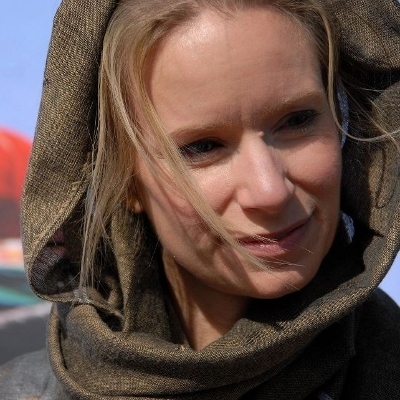
Feminism has brought us a long way, but there are many places around the world where women’s rights are in desperate need of championing. Matador Ambassador Shannon Galpin founded the nonprofit Mountain2Mountain, which helps bring educational opportunities to people suffering from governmental oppression. In 2012, Shannon was recognized by National Geographic as a 2013 Adventurer of the Year for her work helping girls and women in Afghanistan find a voice in their communities. Part of this initiative was supporting the Afghan National Cycling Team, which gave women in Afghanistan a chance to participate in competitive cycling. Shannon’s first book, Streets of Afghanistan: Bridging Cultures through Art, is available for purchase.
Chad Pregracke – Not letting a little garbage stand in his way
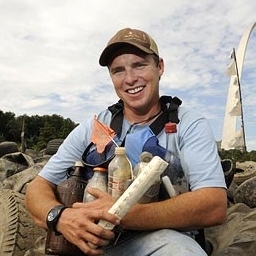
Chad goes beyond what’s expected of a typical sanitation worker — he’s dedicated his life to cleaning up the trash that accumulates along the Mississippi River. It takes courage to do a job no one else wants to do, especially one that Chad fully realized was disgusting, but knew would ultimately improve the lives of others. His selflessness helps him live a life of no regrets in that he recognizes how even one person can make a huge impact; Chad started on his own, but now helps organize over 70,000 volunteers to perform similar community cleanups around the country. Together with his nonprofit, Living Lands & Waters, Chad has collected more than 7 million pounds of trash in the past 15 years.
Ashley Bell – Speaking out for those who have no voice
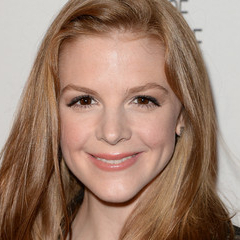
An animal rights supporter since she was young, Ashley juggles her time between acting in feature films, television shows, and shows on Broadway, and spreading awareness about making the world a better place for the creatures we share it with. She’s an ambassador for Cruelty Free International and works towards an end to animal testing for cosmetics and consumer products. Her latest endeavor, a documentary called Love and Bananas, includes a look at the lives of two rescued Asian elephants as they journey from Thailand to the Cambodian Wildlife Sanctuary. Ashley and her production team traveled into insecure zones of Cambodia and used guerrilla-style aerial footage to capture segments of the film in restricted areas of the country. In the face of dangerous conditions, she continues to bring awareness to the plight of Asian elephants.
Casey Neistat – Putting his talents toward a greater good
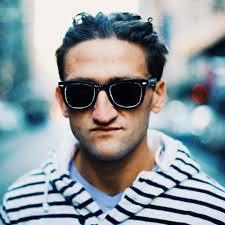
Casey Neistat is no stranger to epicness — his 200+ short films have made him an internet celebrity, led him to star in an HBO docu-series about his filmmaking career, and helped him produce Daddy Longlegs, which premiered at the Cannes Film Festival and earned him an Independent Spirit Award. When approached by 20th Century Fox to produce a film that would inspire people to live their hopes and dreams (a la The Secret Life of Walter Mitty), Neistat took the proposed budget, flew to the Philippines, and used the opportunity to help those affected by the typhoon that devastated the country in November of 2013. $25,000 was spent on supplies, food, and transportation to Tacloban. Casey personally organized and handed out the goods he’d helped purchase to those who needed them most. His experience is proof that filmmakers can make a difference in front of, as well as behind, the camera.
Céline Cousteau – Exploring the world to understand it
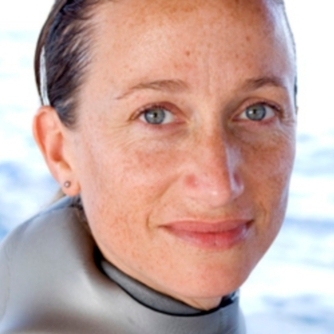
Since she was young, Céline Cousteau has dedicated her life to exploration of our planet. Her love of the ocean, and the life that exists within it, was influenced by her grandfather, ocean explorer Jacques Cousteau, and she has contributed significantly to ocean conservation initiatives. Through projects such as the Amazon Promise Expedition, work with the Uganda Rural Community Support Foundation, and a 12-part documentary film about the ecosystems of Chile, Céline has helped make a significant positive impact on the world around her. Now partnered with Contiki Cares, she leads conservation and marine-biology missions around the world.
Find out how you can win a chance to travel to Costa Rica on a sea turtle conservation trip with Céline.
Robin Emmons – Digging in to help feed her community

When you’re poor, or even homeless, things like nutritional counseling and healthy food options become unattainable luxuries. Robin Emmons understood this, and that feeding low-income families has to go beyond providing just any meal. Many people in her community suffer from health issues — such as diabetes and obesity — that are directly tied to a lack of healthy options in their neighborhood, or because they can’t afford them. So Robin used her own resources, including her personal land, to develop her nonprofit, Sow Much Good. Since 2008, she has grown more than 26,000 pounds of organic produce and distributed it to poor communities in the Charlotte, North Carolina area.
Logan LaPlante – Putting happiness first

Logan LaPlante is changing the way we think about homeschooling, and how location-independent children learn. His homeschooling concept, called “hackschooling,” combines his personal interests with academic motivations, providing him with a well-rounded, experiential education he believes helps heighten his positive mood and outlook on life. He embraces this alternative form of education, incorporating practical and hands-on experiences such as internships, nature walks, and relevant scientific experiments into his everyday life, bridging the connection between teaching and learning. Logan’s laid-back attitude is infectious, and inspirational; at the age of 13, he has already made a name for himself by speaking around the world, including a TEDx talk at the University of Nevada in 2013.
Ellen Page – Standing up to conformity
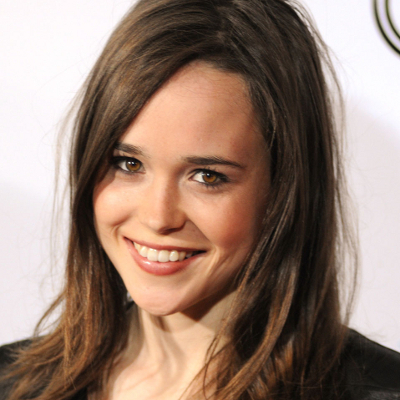
Actress Ellen Page is best known for playing the lead in Juno, a film about a snarky, pregnant teenager who gives her child up for adoption. In real life, Page is more subdued, but still exudes strength in her public speaking appearances. Recently, during a Human Rights Campaign Foundation event, she announced her homosexuality. Beyond this brave “coming out” experience, a move with which both celebrities and “regular” people struggle, Page spoke about the strength we gain in placing our trust in love. She chose to stand up for her beliefs, something many people find difficult, but something which will allow her to live the life she wants — a life with no regrets.
Michael Christian Martinez – Not letting “no” stand in his way
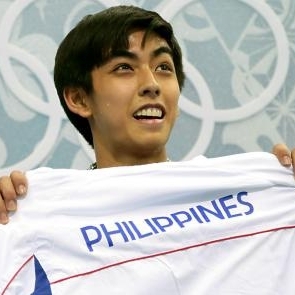
17-year-old Michael Christian Martinez doesn’t let his environment dictate his dreams; he’s out to prove that even people from tropical locations have a shot at medaling in ice skating competitions. Michael trained tirelessly to become the only athlete from the Philippines to compete in the 2014 Sochi Winter Olympics. He used the ice rink at a shopping mall in his community to practice, his technique largely based on videos he watched, and coaching that was paid for using his family’s savings. While he didn’t place this year, his enthusiasm has given hope to many around the world that they can achieve their dreams, despite the obstacles their surroundings might present.
Alex Honnold – Challenging himself every day
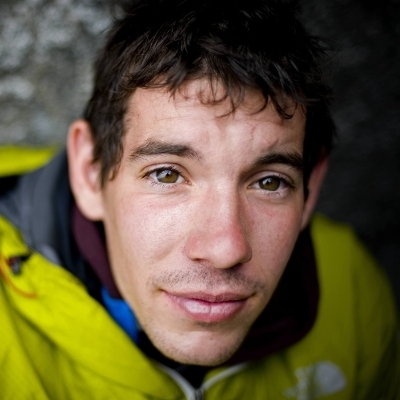
Challenging yourself is one step towards living a life with no regrets. Alex Honnold upholds this virtue, pushing himself to achieve feats few even attempt — free-climbing massive rock walls in search of adventure. At the age of 19, Alex dropped out of college to focus on his passion for rock climbing, and has since made a career out of that which others can only participate in as a hobby. Alex has broken a number of free- and solo-climbing speed records, including the soloing of Half Dome in 1 hour, 22 minutes (annihilating the previous record of 2 hours, 50 minutes…which he also held). Beyond the climbing community, he is an inspiration to those who seek to push the limits of human potential.
Dr. Georges Bwelle – Fighting for free healthcare for those who need it most

After witnessing his father’s struggle with an infection that impaired his body, Dr. Georges Bwelle realized the only way the world can rise above crippling epidemics is if treatment is offered to patients at any cost. And so Georges took matters into his own hands and became a doctor himself. He now organizes free medical clinics throughout his home country of Cameroon, treating illnesses from the common cold to malaria and tuberculosis, and even performing surgeries otherwise unattainable for many because of the expense. He could have become a rich surgeon who catered only to paying customers, but Dr. Bwelle doesn’t regret his decision to serve his people: “I am so happy when I am doing this work…. To make people laugh, to reduce the pain, that’s why I’m doing this.”
Malala Yousafzai – Surviving and striving for educational freedom
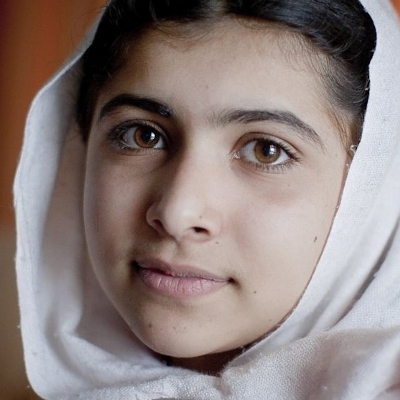
Not many people would be able to find strength after being shot — not to mention if they were targeted based on their beliefs. Malala Yousafzai, winner of Pakistan’s first National Youth Peace Prize (now called the National Malala Peace Prize), has spoken out about girls’ education in her country since the age of 11. Despite being attacked by a Taliban assassin, she continues to fight for women’s education and support her past initiatives, which include writing for a BBC blog about life under an extremist government, and speaking out publicly for women’s rights around the world. At the age of 16, she has already written an autobiography entitled I am Malala: The Story of the Girl Who Stood Up for Education and Was Shot by the Taliban, has won numerous humanitarian awards, and became the youngest girl to be nominated for the Nobel Peace Prize.
Steve Obbayi – Taking on the “crap” no one else wants to deal with

Nearly 40% of the world lacks access to proper sanitation. Kenyan entrepreneur and mountaineer Steve Obbayi knew that increasing the world’s awareness of proper hygiene practices would dramatically reduce illness and death caused by lack of indoor plumbing and running water. Together with Flying Kites children’s home founder Toby Storie-Pugh, they came up with the Do Epic Shit campaign. Their Expedition Everest trek will raise awareness for these issues, and Steve will become the first Kenyan to climb the world’s tallest peak. With so many causes out there, choosing to focus on the “crap” might seem extreme — but for Steve and Toby, the War on Poop is just beginning.
Lizzie Velasquez – Defying the haters, and the odds
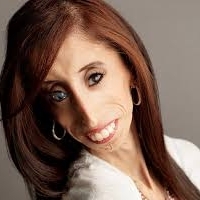
Lizzie Velasquez was born with an extremely rare disorder that prevents her from gaining weight. In high school, she found a YouTube video with pictures of herself that was called, “The Ugliest Woman in the World,” with hundreds of hateful comments that included death threats and pleas for her to commit suicide. Instead of succumbing to these horrible messages, Lizzie realized that the only way she could live a happy life was by standing up to those who doubted her. She excelled in proving to them that she was capable of leading a perfectly normal life, just slightly different from everyone else. Doctors warned her family that she wouldn’t make it past the age of 3; she’s now 25, has a college degree, and makes a living as a motivational speaker.
Dr. Enric Sala – Protecting the last truly wild parts of the world
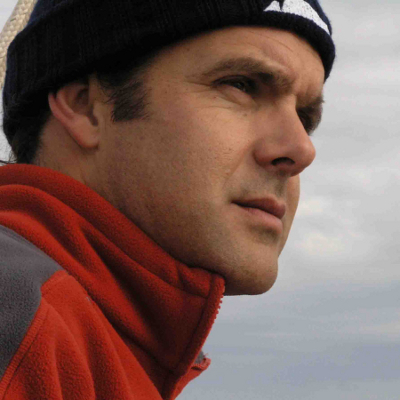
One of the world’s most famous marine conservationists, Dr. Enric Sala travels to extremely remote places to explore, document, and rehabilitate areas of the ocean that see little to no contact with human beings. He has published over 100 scientific reports and produced several films about ocean conservation, particularly concerning the ecosystems of sharks. Dr. Sala is an explorer-in-residence for National Geographic, and is the lead director of the Pristine Seas project. Traveling to such distant places as the Pitcairn Islands and the Pacific Remote Islands takes much time, dedication, and sacrifice, but Dr. Sala knows his work is worth the cost if it manages to impact the world in a positive way. 

Want to join one of these 15 groundbreakers and live a life with no regrets? Share with Contiki where you feel closest to nature for a chance to win one of three spots on a Costa Rica Unplugged adventure, where you’ll assist with the conservation of sea turtles with Contiki’s sustainability partner, Céline Cousteau.
The post 15 people around the world living with no regrets appeared first on Matador Network.

February 25, 2014
The State of the Hudson

All photos: Author
Sailing down my golden river,
Sun and water all my own,
Yet I was never alone.
Sun and water, old life givers,
I’ll have them where e’er I roam,
And I was not far from home.
Sunlight glancing on the water,
Life and death are all my own,
Yet I was never alone.
- Pete Seeger, 1971
Folks up and down the Hudson Valley are still grieving the loss of Pete Seeger, who died at the age of 94 on January 24, 2014. Considered to be one of the most influential people of the 20th century, Seeger was one of the first individuals to believe that the Hudson River could be clean again. In addition to rallying people to care about water quality in the Hudson Valley, he inspired communities across the nation to found watershed groups dedicated to their local streams.
I first listened to Seeger’s songs about the Hudson River as a freshman in college. So moved by his vision and call for action, after graduation I found a job at a nonprofit organization at the headwaters of the Schuylkill River, where over 160 abandoned mine sites compromise water quality. There, I lead outreach and design programs that connect local students with their watershed. Although some days the work seems endless, I find hope when I reflect on Seeger and all that has passed in this one man’s extraordinary life. His vision, needed more now than ever before, still sings.
Today, nearly five million people live in the Hudson Watershed, in addition to over 200 species of fish and 20 pairs of nesting bald eagles. The river sweeps 325 miles from Lake Tear of the Clouds in the eaves of the Adirondack Mountains, through New York State’s bucolic farmlands, and into a tidal estuary stretching more than a hundred miles to Manhattan. Yet in many ways, the people drawn to live on its banks or appreciate it as a recreational resource forget how far it has come.
“At the time Seeger began to sing about his ‘golden river,’ its waters were so severely polluted it was like one giant sewer from Glens Falls to Battery Park,” says Manna Jo Greene, Environmental Director of the Hudson River Sloop Clearwater. “You could tell what color they were painting cars at the General Motors plant.” The water ran red, blue, green, with solvent and paint squeegeed into a drain that went straight into the river.

Read more: The 5 biggest crises facing our oceans today (and why you should care)
Seeger saw beauty through this filth, and in 1966 he resolved to “build a boat to save the river.” Three years later, he launched the Clearwater, a vessel that captured the character of the sloops that once plied the Hudson’s currents in the 18th and 19th centuries, and came to be known as the Flagship of the Environmental Movement. Seeger’s songs, which resounded from the Clearwater’s bow and the banks where it moored, were a magnet attracting crowds by the thousands. One by one, Seeger’s fans signed petitions demanding a cleaner Hudson, putting pressure on Congress to pass the 1972 Clean Water Act.
“All of Pete’s songs had a message,” Greene states, “a message about a clean river, freedom, peace, and justice. Pete empowered people and inspired them to take action. But he also created a lot of work for the rest of us!”
More than 40 years after the Clean Water Act, environmental organizations in the Hudson Watershed are still struggling with the legacy impacts of unregulated industry. Toxic polychlorinated biphenyls (PCBs) dumped by General Electric for decades still lurk on the Hudson’s bottom, contaminating sediment and limiting fish reproduction. Although most of the 1.3 million pounds have been dredged since 2009, there are approximately 136 acres outside the area delineated for cleanup.
The Hudson River has always been a working river — used hard and loved deeply across the centuries.
Rising levels of nitrogen and phosphorous are now becoming serious concerns for the Hudson. One of the primary sources of this spike is the discharge of billions of gallons of raw sewage that pour into the river every year during heavy storm events. Many treatment facilities built in the 1970s are reaching the end of their lives and cannot keep up with elevated flows. Overwhelmed by as little as 1/20th of an inch of rain, they flush untreated waste into the river. Bacteria and algae thrive on this slurry, depleting oxygen and suffocating aquatic life.
Climate change also sits at the top of the threat list. More frequent storms exacerbate pressures on infrastructure like aging sewage treatment systems, while wreaking economic devastation on communities flooded by their own impervious roads, parking lots, and roofs. Sea level rise will also push back wetlands, changing the ecology of the Hudson’s shoreline and threatening transportation avenues — road and rail — that hug the river’s banks.
The magnitude of natural gas and crude oil traveling by train and tanker along the Hudson corridor poses a high risk of spills that could set back water quality achieved since the Clean Water Act in an instant. Additionally, the Algonquin pipeline moves high-pressure natural gas directly under the Indian Point nuclear power plant perched on the river’s shore. This interface of volatile fuels with water resources and the proposition of hydrofracking looming on the horizon suggest the stakes for cheap energy are only going to rise.
Finally, we’re facing new challenges in the realm of water quality never dealt with in human history. Emerging contaminants like hormonal residues from birth control pills, the chemical byproducts of chemotherapy, and even caffeine leave our bodies and enter the water cycle whenever we flush the toilet. Sewage plants were not built to detect or remove these pharmaceutical pollutants, and science is only beginning to understand their consequences.
“Where do you begin when so many things we do present problems?” asks Simon Gruber, President of the Hudson River Watershed Alliance. The challenge Hudson stakeholders face is not a simple list, but rather a tangled web of issues exacerbated by the sheer scale of the 13,390-square-mile watershed.
Nonetheless, the New York State Department of Environmental Conservation is in the process of drafting a new action agenda to develop a unified approach for watershed planning and protection. Input from stakeholders, including fishermen, small boat owners, local decision makers, and environmental activists, will be incorporated into the vision.
“We already know so much,” Gruber asserts. “But we are much further along with our technical tools and best practices than our political will and social mechanisms to employ them.”
Pete Seeger’s songs hold this note, floating over the Hudson and reminding us that environmental justice does not win itself. At times the fight may feel impossible, but battles are being won. Children swim in the Hudson again. Atlantic sturgeon are returning to the headwaters in higher numbers than ever before. And for the first time in 90 years, the Sawmill River flows above ground, after activists leveraged $34 million dollars to bring the watershed to the surface.
The Hudson River has always been a working river — used hard and loved deeply across the centuries. When the valley was first settled, people built their homes facing the water, for the river served as their connection to the rest of the world. Only later, when the industrial revolution transformed the Hudson into little more than a sewer and a cheap way to transport goods, did communities begin to turn their backs on it.
It took a man, a boat, and a vision to turn them around one by one.
Although the Hudson is far from pristine today, the beauty that Pete Seeger saw in it decades ago and believed in his entire life is slowly becoming clear. [image error]
The post The state of the Hudson: Seeking vision in Pete Seeger’s wake appeared first on Matador Network.

Mapped: WhatsApp vs. global GDPs
LAST WEDNESDAY, Facebook announced its plans to purchase WhatsApp, a messaging app with 450 million users, for $19 billion.
$19 billion is a lot of money. If it’s hard for you to wrap your brain around that price tag, here’s a map to help. The countries in green have annual GDPs worth less than the price paid for an app that lets you text your friends. Hover over any of the countries in green to see their 2012 GDP (in billions). 
The post Mapped: Countries with GDPs worth less than WhatsApp appeared first on Matador Network.

Celebrity raises awareness
AFTER MATADOR POSTED an article about why you should think twice before visiting Thailand’s Tiger Temple, many people also brought up some shocking points concerning elephant tours in Southeast Asia. Riding an elephant was once an attraction I would have gladly participated in, but I will now refrain from. Here is why:
In 1986, the Asian Elephant was placed on the endangered species list.
By 2020 it is predicted that the wild Asian Elephant will be extinct.
75% of the jungle where Asian elephants used to live, has been cut down.
Less than 30,000 Asian elephants remain in the wild.
No wild Asian elephant remain in the Cambodian jungle. Elephants are killed for ivory, forced to provides rides for tourists, haul logs at illegal logging facilities, and used and abused for entertainment at zoos and circuses.
Banana On The Loose in Times Square!! from Change For Balance on Vimeo.
Actress and animal rights supporter Ashley Bell cares about these creatures so much, that she recently took to NYC’s Times Square dressed like a banana, to raise awareness for this issue. Her documentary film, Love and Bananas, is about rescuing Asian elephants in Cambodia; I admire anyone willing to get a little silly, in an effort to tell others about their passion and worldly causes. I’d rather pay money to see that, than the Naked Cowboy, any day.
Ashley Belly’s Indiegogo campaign has already raised $21,530, but still has more to go. Please check out her campaign’s website for more details, and stay tuned for an exclusive interview with Ashley where she reveals more about her project, her passion, and why we should pay more attention to the problems Asian elephants in Cambodia face. 
The post Find out why this celebrity is walking around NYC dressed like a banana [vid] appeared first on Matador Network.

How to cook your way to Mexico

Photo: Kendra
These past few months, the continual onslaught of snow and freezing temperatures in Washington, DC, have been driving me nuts. However, I don’t have the money or time to go on vacation somewhere warm to remind myself of what the sun feels like, not just what it looks like when it peeps its head between the snowstorms to melt the accumulation on the ground into gray slush.
So to cure my winter blues, I’ve been cooking my way to Mexico, specifically via my favorite Mexican cookbook, Tacos, Tortas, and Tamales: Flavors from the Griddles, Pots, and Streetside Kitchens of Mexico, by Roberto Santibanez.
Recipes aside, what attracted me to this book initially were its vivid, plastic-colored photos of Mexican street life: a plate of tacos resting on a waxy, Crayola-hued tablecloth; men and women expertly chopping, stirring, and tending food with the concentration of Jedi knights; streetcarts and hole-in-the-wall eateries emblazoned with signs in all caps demanding attention be paid to chicharron, homemade tortillas, even “QUESO EXTRA.”
And then there’s the food: pale, crumble-edged corn tortillas topped with glistening wedges of potato, mushroom, or chopped meat, sprinkled with a confetti of shredded cabbage and cilantro, and then anointed with lustrous sprays of orange or green sauce. Thick tortas (which sound like a kind of cake but are actually sandwiches) stuffed with mashed black beans, pork carnitas, or salt cod. Fluffy corn tamales steamed in corn husk packets, filled with shredded chicken or strawberries.
This winter, I’ve been steadily cooking my way through the book, discovering winner after winner of a recipe. My favorites so far include the savory slow-cooked lamb, tangy marinated skirt steak, cinnamon-orange-scented duck carnitas, and the adobo-marinated chicken that will redefine the way you think of chicken.
But best of all are the array of condiments and sauces that can be easily whipped up from scratch and sit in your fridge all week to dress up everyday breakfasts and lunches. On a depressingly white northern day, toast up a quesadilla on a dry skillet, then sprinkle with a bit of chopped tomato and the following avocado-tomatillo salsa, whose bright notes taste the way sunshine at tropical latitudes feels. Close your eyes, take a bite, and you can almost believe you’re in Mexico.
One note: I’ve tweaked the original recipe a bit to add a note of lime and just a touch of sugar, to cut some of the tartness of the tomatillo. Also, I leave out the seeds of my jalapeno to reduce the firepower, but if you’re a spice-lover, by all means leave them in.
Fresh Green Salsa with Avocado
(adapted from Roberto Santibanez’s Tacos, Tortas, and Tamales)
Yield: about 1 ½ cups
½ pound tomatillos (5 or 6) husked, rinsed and coarsely chopped (Look for tomatillos that aren’t too bruised or dried out. You can find them canned as well, though fresh are much better for this.)
½ cup coarsely chopped cilantro (I just rip a handful of the stuff off the bunch, rinse it, and throw it in. The stems have as much flavor as the leaves, so you can add those too as long as they get chopped up.)
4 fresh jalapeno or serrano chiles, coarsely chopped (Seeds in for heat, seeds out for a milder salsa.)
1 large garlic clove, peeled (Don’t make the mistake I once made of adding extra garlic — this is plenty.)
2 tablespoons of chopped white onion (Red is fine too.)
2 teaspoons kosher salt
½ medium lime, juiced
1 or 2 pinches of sugar to taste
½ cup water
1 large ripe Hass avocado
Put the tomatillos in a blender first, then add the remaining ingredients. Pulse to chop up the tomatillos, then blend until very smooth, at least 1 minute. Season to taste with additional chile, salt, or sugar (be careful — not too much), and blend again. My salsa stays in the fridge for about 5-6 days. [image error]
The post Take a super cheap vacation to Mexico…in the kitchen appeared first on Matador Network.

Matador Network's Blog
- Matador Network's profile
- 6 followers




